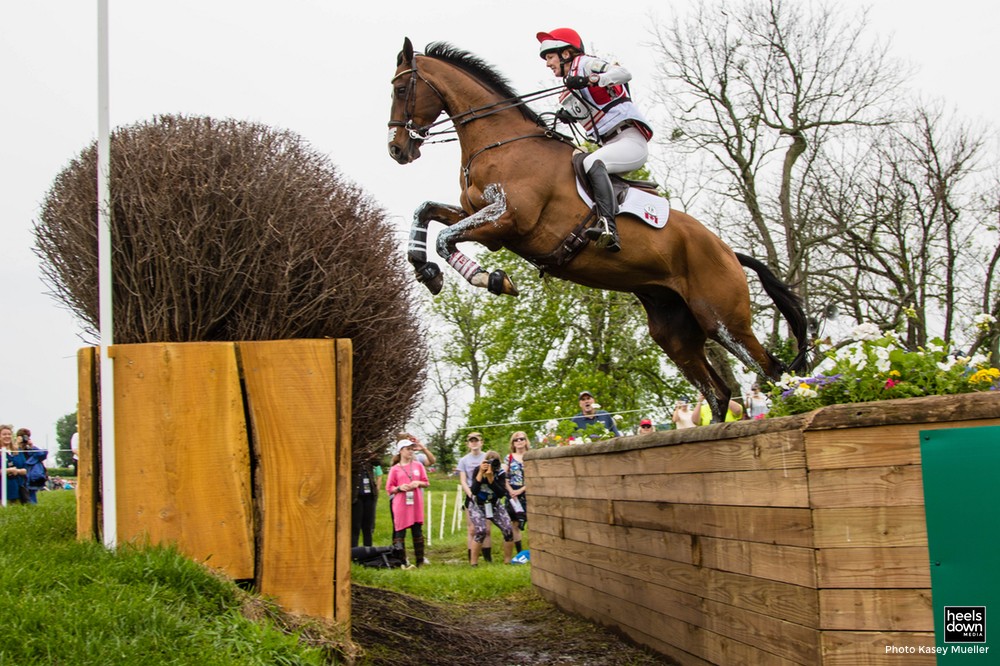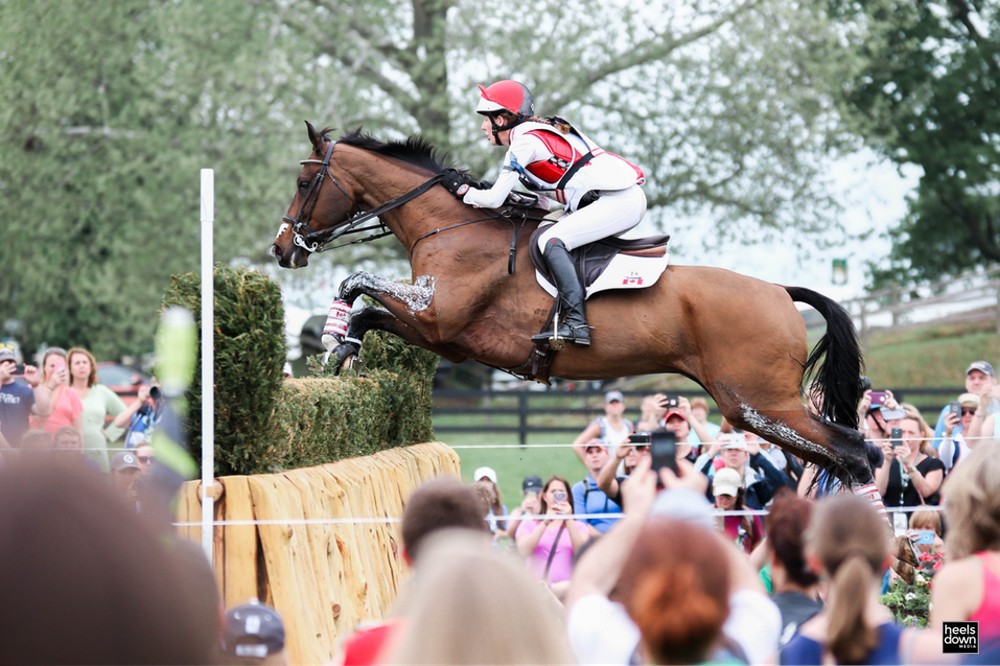How to Create a Bold Horse

Canadian eventing Selena O’Hanlon has ridden around the biggest and toughest cross-country tracks in the world.
Creating boldness and confidence in the horse, she explains, is a constant work in progress. It requires planning and persistence. She breaks down how she has developed courage in her own horses, and how she trains her students to do the same.
Train the Voice and Whip
“I do a lot of coaching and I teach my students that if you’re nervous or your last fence rode badly, give the horse a tap behind your leg. Even if in your heart of hearts you’re thinking, “That fence didn’t feel good,” you never want the horse to know that, so you can give them a little tap behind the leg and say, ‘Get up, let’s go.’
If you have a horse that is a little shy of the water, for instance, in the gallop [up to the water] I’d probably give him a little pop behind the leg. This speeds up the horse’s legs in gallop, so when you need to collect for the jump into the water, if the legs are quick and you’re holding the front end a bit, then you’ve got options. If they’re maxed out in their gallop (coming up to a jump into the water), you’re going to be out of options.

In the warmup, I cluck to them and give them a smack, and then they shoot forward and I pat them and tell them they’re good. That way, when I can’t take my hands off the reins to pop them with the whip on course, they’re still responsive to the voice. David O’Connor caught me that. If it’s a really chicken horse, by the time I get back home, my voice is almost gone.
It’s a great tool to go to your voice, but you’ve got to train them. But if you do the cluck-tap in the warmup or at home, you’ve got to let them shoot forward a few strides – don’t pull on the reins.”
Be Invisible to Your Horse
“The rider can be a big distraction for the horse. You can practice becoming less of a distraction in your riding at home without even jumping.
When I do my canters or gallop sets around the field, I’ll pick an object – say, a fence post or a tree or a sign – and I pretend it’s a jump, and I’ll count my strides to it. Five strides out is the point of no return. You have to have the balance, the line, the rhythm and the pace to get the job done in that last five strides. If something changes in that space – the horse spooks or backs off or you drop a rein – then, you ride on instinct and that’s what eventing is all about. But ideally, you get the pace, balance, line, everything you need at five strides out and then you maintain, maintain, maintain, and ask (for takeoff) when you get to the fence.
When you go from a galloping position to joining to the tack incrementally (transitioning from a two-point position to connecting the seat to the saddle and bringing the shoulders back), and getting the pace you need for, say, a coffin or a skinny or a sunken road as opposed to a galloping fence or steeplechase fence, it takes a lot of body control. There’s a lot of control and stability necessary to incrementally go from galloping, to sitting, to nose-behind-the-pommel, to releasing over the jump.
So if you practice when you’re galloping around or cantering around, pick a sign or a fence post and pretend it’s a coffin jump. Think to yourself, ‘I’m going to incrementally join my seat to the tack, bring them back, and let’s see, did I get my coffin canter before five strides out?’
Riders like William Fox-Pitt, even though he’s so tall, he takes nothing out of the horse because he’s so careful about how he opens and closes his body, so it’s no distraction to the horse. That’s a big part of body control, and that’s how you can become less distracting to the horse.”
Take a Lead to Start
“If you have the opportunity to go fox hunting with a group of experienced horses that are trustworthy, even if it’s a hunter pace where you can pick whether or not you jump the fences, it helps green horses or less confident horses to follow a leader. With my baby horses, even if I know the horse is going to go over the jump, the first couple of times I’ll follow another horse over everything before we go try it on our own.”
Be Picky and Persistent about Water
“I never take them into murky water. I know there are plenty of people that do, whether they’re hacking on trails and need to get from one property to the other, or whatever, but I always, always take them into water that they can trust me. It’s never deep or muddy or has footing that might sink or might cause them to lose a boot or a shoe. And when I’m cross-country schooling, I always trot them through the water before I jump them into it.
I used to have a horse in my barn that was afraid of blue jumps and liverpools, so I told the owner, “Put the liverpool between yourself and the ring. Dressage tack, jumping tack, it doesn’t matter. Just walk over it every single day. (Selena’s 2010 WEG mount) Colombo was shy about the water so we used to take him into the water every single day for a year. Rain, shine, you feel like it, you don’t feel like it, you just got home and it’s 8-o’clock at night – it doesn’t matter. You take them down there and you get it done. It makes a huge difference.”


